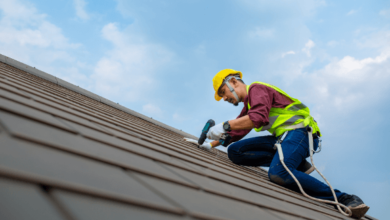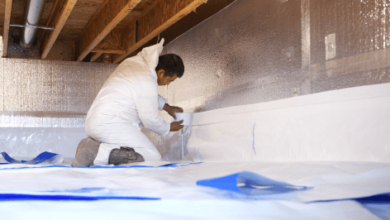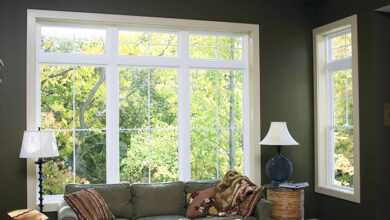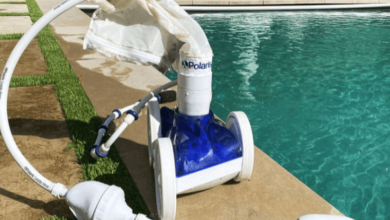Keeping Your Home Healthy: Prevent Dry Rot and Reduce Condensation

Introduction
Welcome to our guide on keeping your home in great shape by stopping dry rot and cutting down on condensation! Dry rot is a kind of damage that can weaken the wood in your house when it gets too moist. Condensation happens when air hits a cold surface, turning water vapor into liquid. This can lead to wet spots that might cause problems in your home. In this article, we’ll show you why it’s so important to keep these issues away to ensure your house stays strong and healthy. Let’s find out how you can protect your home from these common troubles.
Understanding Dry Rot
Dry rot is a serious problem that happens when the wood in your house gets too wet and starts to break down. This can make your home weaker and unsafe. How can you tell if you have dry rot? Look for wood that feels soft and crumbly, or if it looks darker than usual. Also, you might see a mushroom-like growth or a musty smell in areas with little air flow. Understanding these signs will help you spot dry rot early.
Causes and Prevention of Dry Rot
One of the main reasons why dry rot happens is because of too much moisture. If parts of your house, like basements or attics, stay wet, it’s easy for dry rot to start growing. Therefore, keeping these areas dry is key to preventing dry rot problem.
Firstly, make sure your home is well-ventilated. This means letting fresh air in and stale, moist air out. You can do this by opening windows regularly or using fans, especially in rooms that don’t get much airflow. Also, check for any leaks in your roof or around windows and fix them quickly, because water from leaks can lead to dry rot.
Additionally, it’s a good idea to use a dehumidifier in damp areas of your home. This machine helps reduce the amount of moisture in the air, which makes it harder for dry rot to grow.
Finally, inspect your home regularly for any signs of moisture or damage. If you catch these problems early, you can fix them before dry rot starts. By taking these steps, you can protect your home from dry rot and keep it strong and healthy.
Tackling Condensation in Your Home
Condensation in house happens when warm, moist air touches a cold surface, like windows or walls, turning the water vapor into liquid. This often shows up as water droplets or fog on windows, which might look neat but can actually cause a lot of problems if it’s not taken care of.
Now, where does condensation usually happen? It’s most common in places like the kitchen or bathroom where there’s a lot of steam, but it can also appear in poorly insulated rooms or near cold windows.
To manage this, first understand that keeping your home evenly warm helps prevent cold surfaces that cause condensation. This means using heaters wisely and making sure your home’s insulation is up to scratch. Also, when you’re cooking or showering, turning on an extractor fan or even cracking open a window can really help by letting the moist air out instead of letting it settle on cold surfaces.
Moreover, keeping furniture away from walls helps air circulate better, reducing damp spots that can lead to mold. By following these tips, you can keep your home drier and more comfortable.
Practical Steps to Reduce Condensation
Reducing condensation in your home is all about controlling the moisture inside. First off, using a dehumidifier is a great way to pull excess water from the air, especially in rooms where you notice more dampness. This device can make a big difference by keeping the air drier.
Also, increasing air flow in your home can help a lot. Simply opening windows or using exhaust fans in places like the kitchen and bathroom helps move the moist air outside instead of letting it settle on cooler surfaces inside your home. When you’re cooking or taking a hot shower, always remember to turn on these fans.
Another helpful tip is to keep your home warm. Using your heating system efficiently helps maintain a consistent temperature and prevents cold surfaces where condensation can form. Plus, during cold weather, consider using radiator reflector panels behind heaters to direct warmth back into the room, which helps reduce cold spots on walls.
Lastly, if you dry clothes indoors, try to do it in a ventilated area or use a dryer that vents outside. Wet clothes drying inside can add a lot of moisture to your air, which can lead to condensation problems. By taking these steps, you can keep your home more comfortable and moisture-free.
Long-Term Solutions and Maintenance
For a long-term solution to prevent dry rot and condensation, it’s essential to focus on your home’s structure and maintenance. Firstly, consider upgrading to double-glazed windows if you haven’t already. These windows have two layers of glass with a space between them that reduces the loss of heat and prevents condensation on the inside glass during cold weather.
Next, check the insulation in your attic and walls. Proper insulation keeps your home warm and dry by making sure that the heat stays inside, which helps to prevent both dry rot and condensation.
Also, ensure your home’s exterior is well-maintained. Regularly cleaning your gutters and downspouts prevents water buildup around your home’s foundation, which can lead to moisture problems inside. Additionally, make sure the ground around your house slopes away from the foundation, so water does not collect there.
Seasonally, inspect your home for any signs of wear and tear that could let moisture in, like cracked roof tiles or peeling paint. Fixing these issues promptly can save a lot of trouble later on.
By taking these preventative steps, you can keep your home healthy and protect it from moisture-related damages year-round.
Final Words
Remember, taking small steps now can prevent big problems later. So, always keep an eye out for any signs of moisture or damage and fix them quickly. By doing this, you’ll keep your home healthy and comfortable for everyone who lives there. Let’s make sure our homes stay in top shape!





